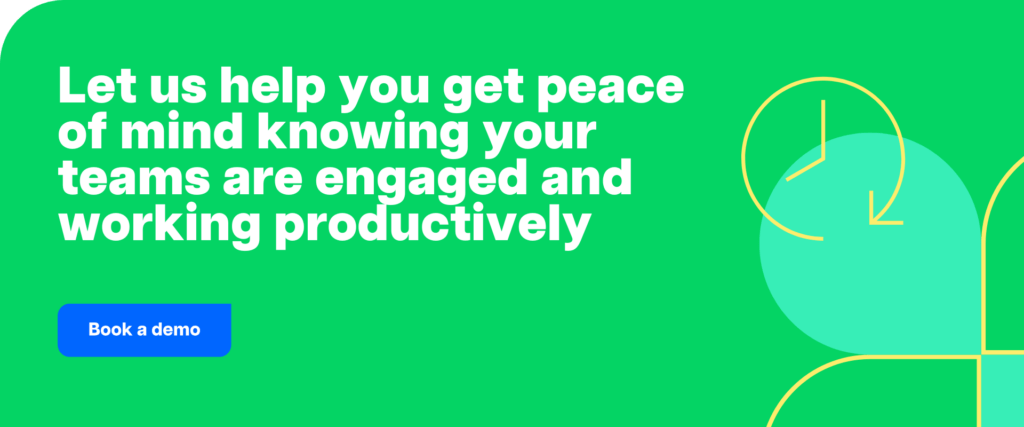To stay competitive in today’s world, which is always moving quickly and changing, businesses need to encourage a mindset of continuous learning and adaptation all the time. This article talks about why it’s important to make your business a place where learning is constant and normal. It also gives you ideas on how to make this happen
Table of Contents
- Why is continuous learning important in today’s world?
- Understanding the barriers to continuous learning
- Key strategies to foster continuous learning
- Tools and resources to support learning
- Creating an environment that encourages risk-taking and innovation
- Measuring the impact of a learning culture
Why is continuous learning important in today’s world?
Learning new things and adapting is not just a good thing these days; it’s a must. Technology changes quickly, and the market is always changing. Businesses that help their employees learn can handle new scenarios, generate fresh ideas, and stay ahead of the competition better. Continuous learning not only makes each worker better at their job, but it also makes the whole company more adaptable and strong.
Understanding the barriers to continuous learning
It’s not always easy to create an atmosphere of continuous learning. Finding and fixing these problems is important for companies that want to build a culture where learning is constant and part of everyday work life. Here, we discuss common problems and misunderstandings, as well as what happens when there isn’t a learning atmosphere.
Here are the common challenges and misconceptions in establishing a continuous learning environment:
- Fixed mindset about learning: If workers don’t have a place where they can keep learning, their skills don’t change with the market. This can leave the company lacking in skills, putting it behind the competition, especially in industries that change quickly and need up-to-date information.
- Lack of time for learning: In many places of work, learning is put on hold because of the need to meet quick business goals. If management doesn’t clearly define and schedule time for development, employees may find it hard to justify spending time on it.
- Insufficient resources: Building a learning culture can be difficult when there aren’t enough tools, like courses, mentors, or learning materials. Some organizations cut back on their support for educational opportunities because they can’t afford to or don’t see the value in doing so.

The impact of not having a learning culture
The absence of a learning culture can have profound negative effects on an organization.
- Skill stagnation: If workers don’t have a place where they can keep learning, their skills don’t change with the market. This can leave the company lacking in skills, putting it behind the competition, especially in industries that change quickly and need up-to-date information.
- Employee disengagement: A lack of learning opportunities can lead to decreased motivation and satisfaction among employees, as they feel their growth is not a priority. This often leads to more employees leaving, which makes it harder for the company to keep good workers and find new ones.
- Inhibited innovation: Learning is an important part of innovation because it lets people try new things, look into new ideas, and solve problems in creative ways. Companies have trouble coming up with new ideas and changing when they don’t have a learning culture that supports them. This can slow their long-term growth and success.
Organizations need to understand and deal with these effects if they want to create a proactive learning environment that promotes continuous growth and leads to success.
Key strategies to foster continuous learning
It’s important to be able to learn and change all the time in today’s fast-paced work world. When a company supports its employees to keep learning, it not only gives them the skills they need to deal with changes, but it also leads to growth and new ideas. Making learning a constant part of every employee’s journey and the success of the company as a whole is what strategies do. They make sure that learning is an ongoing, necessary part of everything the company does. To keep people learning, here are some important things to do:
- Promote a mindset of growth and curiosity: Encourage your workers to have a growth mindset, which means they should be open to new challenges and see mistakes as chances to learn. Leaders should show their teams how to do this by always learning new things and sharing what they’ve learned. Honor important learning moments and make it clear that the company values curiosity and always getting better.
- Incorporate learning into daily routines and processes: Every day at work, make learning a big part of what you do. This might mean having short learning events every day or once a week, giving students problems to solve that require them to use new skills, or letting them learn during the debriefing of a project. There are many ways to learn at work, such as through online classes, webinars, and interesting platforms. It will be easier to learn when you have other things to do.
Setting up a culture of continuous learning is an ongoing process that needs support from everyone in the company. Companies can create an atmosphere where constant improvement is the rule, not the exception, by encouraging people to have a growth mindset and making learning a part of their daily lives. This method not only improves the performance of individuals and groups, but it also makes sure that people can bounce back from setbacks and adapt to a world that is always changing. Use these tips to turn your company into a thriving, learning-centered group that is ready for the challenges of tomorrow.

Tools and resources to support learning
Having the right tools and resources is essential in fostering a continuous learning culture. This not only makes learning accessible but also engaging and relevant to the needs of the organization and its employees. Below, we explore a variety of tools and resources that can significantly enhance the learning environment within any organization, focusing on technology, platforms, and the invaluable role of mentorship and coaching.
Technology and platforms that facilitate continuous learning
- Learning management systems (LMS): Platforms like Moodle, Blackboard, and Cornerstone provide structured environments where employees can access training modules, track their progress, and receive certifications.
- Online course providers: Use platforms such as Coursera, Udemy, or LinkedIn Learning to offer employees a wide range of courses covering various skills and topics.
- Collaborative tools: Implement tools like Slack or Microsoft Teams that integrate educational bots, workflow automation, and quick access to microlearning sessions.
Role of mentorship and coaching
- Mentorship programs: Set up official mentorship programs that pair less experienced workers with more experienced professionals to help them learn new skills and get career advice.
- Coaching sessions: Hold regular one-on-one coaching sessions with employees to help them set and reach their learning goals. These sessions should focus on personal growth plans.
- Peer learning groups: Encourage your workers to join peer learning groups to share what they know, discuss problems, and learn from each other’s experiences.
To create a learning culture that adapts and grows, it’s important to use the right tools and build a network of support through mentorship and coaching. These tools not only help individuals grow but also improve the organization’s overall knowledge and skills. Companies that buy these tools and create all-encompassing learning plans set themselves up for ongoing improvement and new ideas. This helps them stay competitive and strong in a constantly changing business world.
Creating an environment that encourages risk-taking and innovation
Taking risks and coming up with new ideas are important parts of a mindset of continuous learning. To stay competitive and flexible, businesses need to create a space where trying new things and learning from mistakes are not only okay, but also promoted. Here are some steps you can take to make your workplace a safe and supportive place where people feel valued and supported as they try new things and push the limits.
How to safely encourage experimentation
- Implement a ‘Test and Learn’ approach: Encourage teams to undertake small-scale experiments where the risks are manageable but the learning potential is significant.
- Set clear boundaries and guidelines: Provide clear criteria for what constitutes acceptable risk and ensure everyone understands the scope within which they can operate freely.
- Provide the necessary resources: Allocate specific resources, such as time, budget, and tools, to experiment with new ideas or processes.
Celebrating failures as a path to learning
- Foster a ‘No-Blame’ culture: Establish a culture where mistakes made during genuine experimentation are not blamed but are viewed as valuable learning opportunities.
- Share lessons learned: Regularly hold sessions where teams can discuss what didn’t work and why, ensuring that these lessons are shared organization-wide to prevent repeat errors and foster collective learning.
- Recognize constructive failures: Implement recognition programs that acknowledge and reward attempts to innovate, even if they don’t always result in success.
Organizations can greatly increase their capacity for innovation by fostering a culture that values learning from mistakes and encourages safe experimentation. This strategy not only promotes project advancement and success but also gives workers more authority, which raises engagement and strengthens loyalty to the organization’s objectives. By adopting these tactics, obstacles will be transformed into opportunities for development and creativity, advancing the company on its path of ongoing learning.
Measuring the impact of a learning culture
Organizations must effectively monitor the impact of a continuous learning culture if they are to reap its full benefits. This illustrates the importance of learning initiatives and provides direction for further advancements. Below, we examine the important measures and indicators that may be used to monitor a learning culture’s effectiveness and how continual feedback can fuel ongoing improvements.
Metrics and indicators of success
- Employee engagement with learning programs: Track participation rates in training sessions, online courses, and other learning activities.
- Skill development progress: Assess improvements in employee skills through pre- and post-training assessments or regular performance reviews.
- Impact on performance: Monitor changes in productivity, quality of work, and innovation before and after implementing learning programs.
- Employee retention rates: Compare turnover rates before and after fostering a learning culture, as enhanced engagement and satisfaction typically reduce turnover.
Continuous improvement through feedback
- Regular employee surveys: Conduct surveys to gather feedback on learning resources, training effectiveness, and areas for improvement.
- Feedback channels: Establish open channels for employees to provide real-time feedback on learning experiences and suggest enhancements.
- Iterative program adjustments: Based on the feedback gathered, make incremental changes to learning programs to keep them current and efficient.
In order to make sure a learning culture is successful and sustainable, it is essential to measure its effects. Organizations can adjust their learning initiatives to better suit the demands of their workforce by closely monitoring key KPIs and implementing a continuous feedback loop. This proactive strategy develops a culture of continuous development that can adjust to future possibilities and challenges, while also improving individual and organizational performance. Adopt these techniques to make sure that your learning culture is a catalyst for growth and achievement.
Conclusion
It takes more than just implementing new techniques or tools to promote a culture of constant learning and adaptation; it also takes the development of an all-encompassing atmosphere that encourages development, creativity, and resilience.
Organizations may prosper in a dynamic global environment by deliberately integrating learning into daily activities, removing obstacles to learning, and utilizing tools that improve educational chances.
The sustainability of learning efforts depends on measuring the results and iteratively improving the strategy in response to feedback. In the end, a dedication to ongoing education equates to a dedication to long-term achievement and ongoing progress.

Andy is a technology & marketing leader who has delivered award-winning and world-first experiences.


